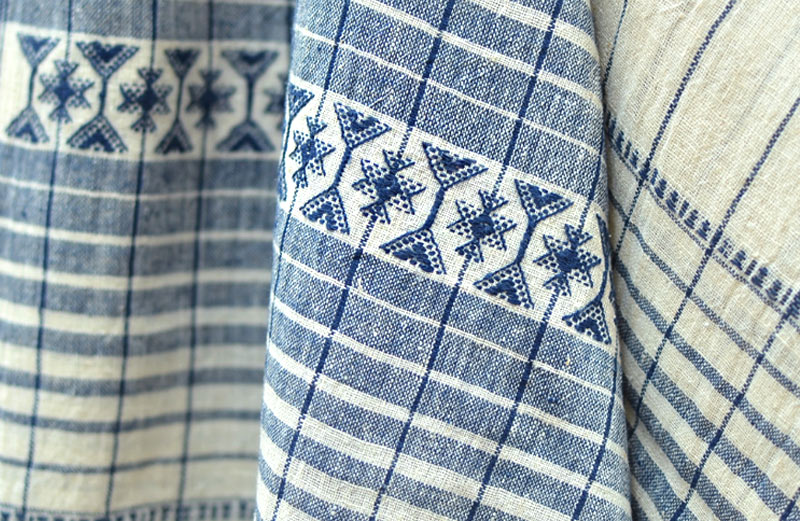Kala Cotton of Kachchh is the original pure Old World cotton of India. Kala Cotton Initiative encourages sustainable cotton textile production and the preservation of agricultural and artisan livelihoods in Kachchh.
Why Kala Cotton?
Kachchh has experienced rapid industrialization since the 2001 earthquake. While the impact of big industry has its positives, it has adversely impacted cultural livelihoods and their endurance is now shrouded in uncertainty. The number of weavers in Kachchh has declined from over 2000 in the mid-1990s to only 600-700 in practice today. Small-scale weavers cannot buy raw materials in bulk and face the greatest difficulties in integrating with changing markets. There was a clear need to develop a local value chain in order to insulate these weavers from external market fluctuations. To do this, the raw material was required that was locally grown, environmentally friendly, that had the potential to create social value.
Kala cotton is indigenous to Kachchh and by default organic, as the farmers do not use any pesticides and synthetic fertilizers. It is a purely rain-fed crop that has a high tolerance for both disease and pests and requires minimal investment. It is both resilient and resurgent in the face of stressful land conditions
Kala means ‘black’ in some Indian languages, often leading to the misconception that Kala cotton is black in colour, whereas it actually refers to the empty boll after extraction of the cotton fibre. Kala cotton has specific characteristics. This indigenous strain of cotton is genetically pure, which differentiates from the genetically modified Bt cotton. Kala cotton is hardy and resilient even under harsh weather conditions. Completely rain-fed and growing naturally even in the arid, drought-prone areas of Kutch, where there is less than 40 cm of rainfall, its high drought tolerance imposes minimal or no demand on scarce water resources, which makes it extremely water efficient.
Irrigation requires electrical or diesel energy to lift and supply water; manufacturing and transporting chemical fertiliser requires energy and produces greenhouse gases after usage; the use of pesticides poisons the environment, soil and water. For the most part, This cotton is grown without the use of irrigation, chemical fertilisers and pesticides, which makes its ecological footprint much lower as compared to other varieties of cotton. This is the reason that Kala cotton is considered to be among the most energy-efficient and carbon neutral crops in the world; more so in the present conditions of water scarcity in India.The trepidation about global warming and possible desertification also raises the present-day relevance of Kala-cotton.
According to the Vision 2030 report published by Nagpur-based Central Institute for Cotton Research in 2011, about half the cotton growing areas in Gujarat are irrigated. The rain-fed Kala cotton continues to be grown in the Rapar and Bhachau taluka of Kutch as these areas suffer from water scarcity and irrigated farming has not yet reached them.



